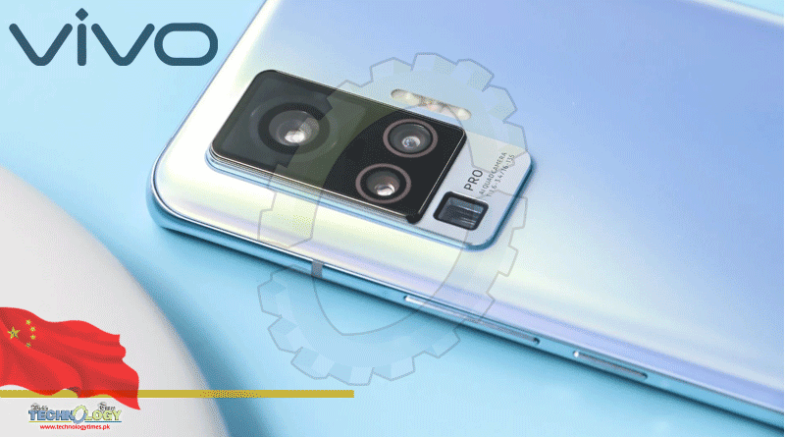Vivo X60 And X60 Pro Will Go On Sale January 8 In China, But We’re Still Waiting For Word On A Global Launch. That Could Come In Early 2021

The Vivo X60 has been announced – it’s the next flagship smartphone from the popular Chinese phone maker, with some pretty premium-looking specs and features. This new Vivo phone was debuted at an event in the company’s home country on December 29 – it seems that, for now, this was a China-only launch, and we’re waiting on a worldwide Vivo X60 release date. There are technically three Vivo X60 phones – the ‘standard’ model and a Pro, which were both unveiled at the December 29 event, and the Vivo X60 Pro Plus, which is due to get its own event at the end of January 2021. We’ve collected all the information on the Vivo X60 so you know how this smartphone compares to its rivals, as we wait for a full global launch. The Vivo X60 and X60 Pro will go on sale January 8 in China, but we’re still waiting for word on a global launch. That could come in early 2021, though there’s no guarantee it’s coming at all.
In terms of price, we know how much the phones cost in China, and can provide rough conversions for international pricing, but given prices can often be quite different in China compared to the rest of the world, take them with a pinch of salt. The Vivo X60 comes in three version: there’s one with 8GB RAM and 128GB storage for CNY 3,498 (about $540, £400, AU$700), an 8GB/256GB model for CNY 3798 (roughly $580, £430, AU$760), and finally a 12GB / 256GB version for CNY 3,998 (around $610, £450, AU$780). There’s only one Vivo X60 Pro model, with memory the same as the priciest standard version, and it costs CNY 4,498 (around $690, £510, AU$910).
The Vivo X60 looks very similar to the Vivo X51, its predecessor, particularly on the back with a nearly-indentical rectangular camera bump dominated by the large main snapper. The Vivo X60 Pro is slightly different in this regard, with an extra rear lens extending the block. The main design difference is on the front, as the front-facing camera, which is a ‘punch-hole’ cut-out in the front screen, isn’t on the top-left of the screen but the top center. Vivo states the X60 is the thinnest 5G phone ever, at least at time of release, with a body only 7.36mm thick. That is indeed pretty thin. The Vivo X60 comes in three colors: black, white and a two-tone blue, and the Vivo X60 Pro is available in all those shades save white. The screen here is 6.56 inches across, and it uses AMOLED technology like many top-end devices. We don’t know a resolution just yet, but it’s likely FHD+. It also has a 120Hz refresh rate.
Cameras
The Vivo X60 has three rear cameras: a 48MP f/1.48 main, 13MP ultra-wide and 13MP ‘portrait’ (2x zoom) snapper. The X60 Pro has the same with an additional 8MP periscope snapper with 5x optical zoom. The lenses for the phones were made in partnership with Zeiss, a photography company which also works with Nokia on its smartphone cameras. The main camera has a unique feature for smartphones – well, one that’s unique to Vivo phones, at least – in that it’s got an in-built gimbal for image stabilization. We saw this first in the Vivo X51 and the X60 uses a second-gen version of the feature, and it lets the sensor physically move to counteract shaking hands when you’re taking a photo or video. There are plenty of videography modes here, as Vivo made sure to show off in the X60 launch. There’s a 21:9 mode for filming in that cinematic aspect ratio as well as a ‘Movie Texture Filter’ which presumably replicates the look of anamorphic lenses used in shooting movies. There’s also a subtitle mode and stereo audio recording.
Specs and performance
The Vivo X60’s chipset was made by Samsung, as both the standard and Pro models use the Exynos 1080 chipset. We haven’t seen this chipset in use before, so we don’t know how powerful it is, but rumors suggest it’s almost as snappy as the Snapdragon 888, a top-end processor from Qualcomm, one of the most prolific chipset makers. The chipset enables 5G connectivity, so both phones use the next generation of mobile network. One of the biggest new announcements at the Vivo X60 launch was that of OriginOS, a brand-new operating system for these and future Vivo phones. Past handsets from the company have used FunTouchOS, but OriginOS is a brand new thing from the company. OriginOS seems to have a really customizable home-screen, as the demo showed normal apps being turned into widgets and spread across multiple blocks in the home page grid.
Battery life
The Vivo X60 has a 4,300mAh battery, but that goes down to 4,200mAh for the Pro model. When we get the phones in for testing, we’ll see how long these power packs last, but given the capacity and screen size, we’d estimate roughly a day each. There’s 33W wired charging for both models, and it doesn’t seem that wireless charging is a thing here.https://technologytimes.pk/2020/11/17/pakistan-to-launch-5g-mobile-connectivity-in-country-soon/
This news was originally published at Tech Radar
